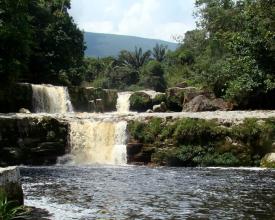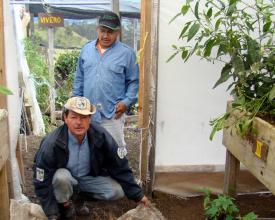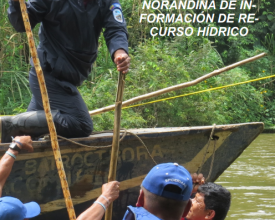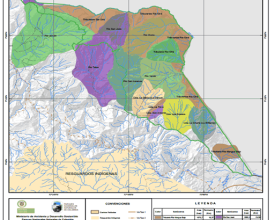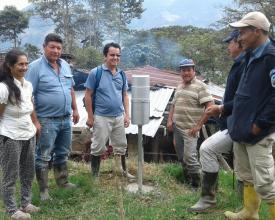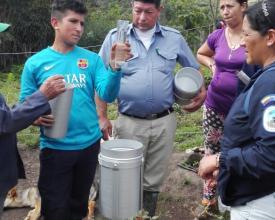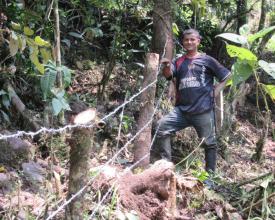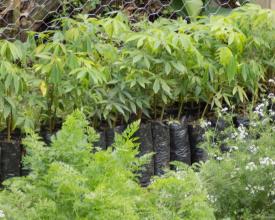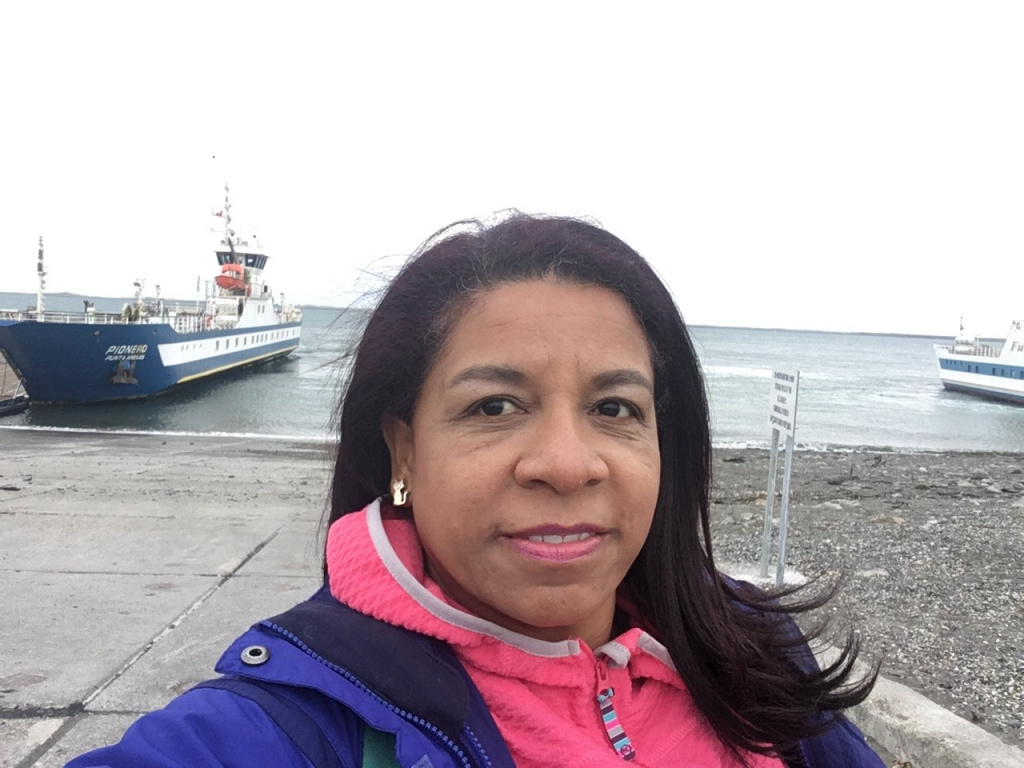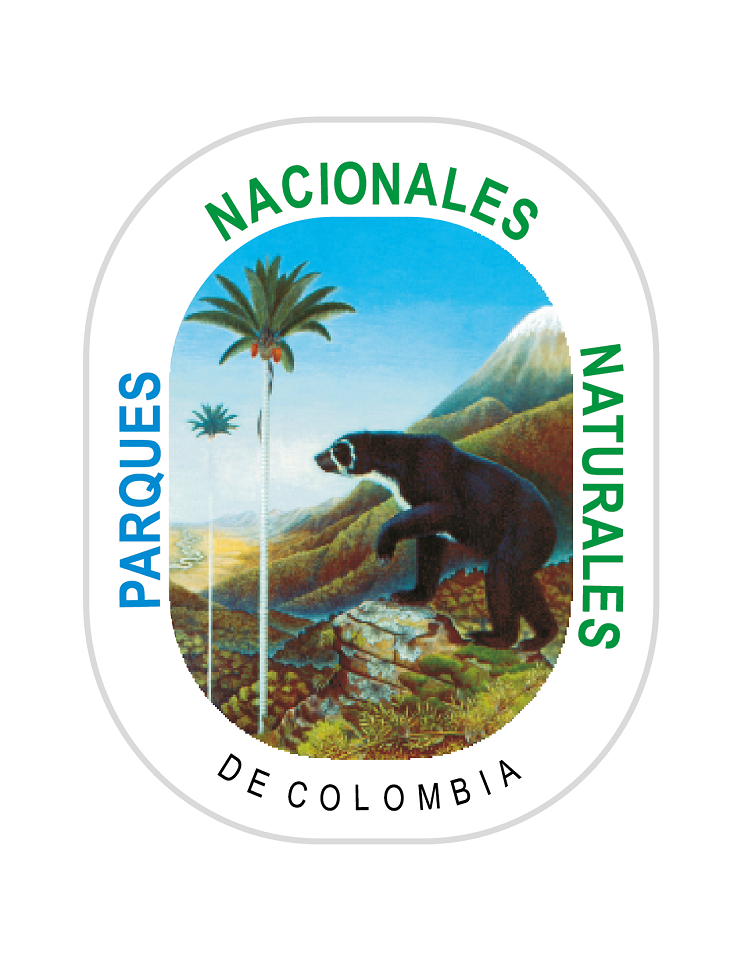
Sustainable development, climate change adaptation and OMEC in the buffer zone of Tamá National Park
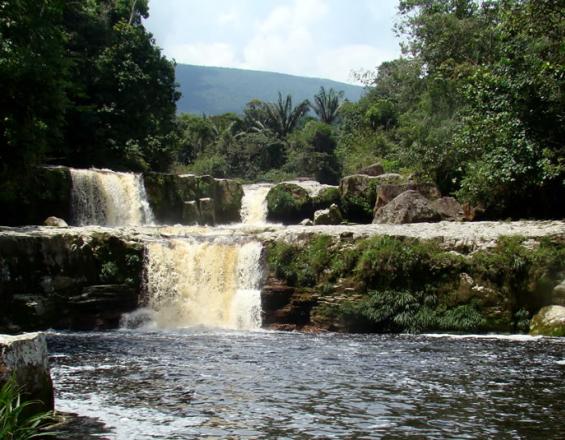
PNN Tamá is a water star that supplies productive sectors and communities in several departments in northeastern Colombia and states in western Venezuela. The lack of local development, the armed conflict, as well as climate change and climate variability have generated pressures on land use in the area surrounding PNN Tamá. As a solution, from the National Natural Parks of Colombia we innovated the sustainable local production of coffee agroforestry systems, participatory monitoring of water resources and partnerships for resource management, which have strengthened investments and relationship processes with strategic actors in favor of the conservation of ecosystem services provided by the Park. In addition, we have supported the declaration of Civil Society Natural Reserves, surrounding and protecting PNN Tamá with private protected areas managed by the communities.
Context
Challenges addressed
Factors such as the armed conflict, the lack of rural development, and climate change and variability have generated difficulties for the communities neighboring Tamá NP and, with it, an unstable buffer zone that puts pressure on the area. These environmental, social and economic problems have generated the need to consolidate a buffer zone that contributes to the achievement of the PNN's conservation objectives, a joint effort that is strengthened to the extent that the municipalities, productive sectors and communities understand that Tamá's stability is vital for adaptation to climate change and the provision of water resources, among others. In this sense, PNN Tamá has created innovative investment solutions and alliances that contribute to land management, generation of sustainable economic opportunities, participatory monitoring of water resources and declaration of protected areas such as the National Civil Society Reserves.
Location
Process
Summary of the process
Based on the lack of local development, disarticulation and uprooting of communities due to the armed conflict and climate challenges, several innovative proposals are needed that dialogue with each other in an integrated manner to effectively respond to the problem. In this sense, in the search to consolidate a stable buffer zone that is in harmony with the conservation objectives of the PNN, the building blocks interact in the following manner. Alliances and resource management generate investments to take the initial steps in the process, while the development of agroforestry systems for coffee cultivation guarantees that, in the long term, the communities will have income. With a sustainable community-based production system framed by the declaration of Civil Society Natural Reserves in the campesino properties and with water resource monitoring activities, the conservation focus of the buffer zone is guaranteed and a participatory process where the communities permanently monitor the surrounding area of PNN Tamá, thus generating the protection corridor that the protected area needs to maintain itself and provide ecosystem services.
Building Blocks
Participatory water resource monitoring
Knowledge of the hydrological cycle in watersheds supplying water resources is considered strategic to favor the provision of hydrological ecosystem services in quality and quantity that favor the different beneficiary sectors. In this sense, knowing through participatory monitoring the behavior and variability of water quality and quantity indicators of water sources is vital to understand how actions in the territory influence the state of the watersheds. Likewise, the inclusion of the communities represents an opportunity for the recognition and appropriation of the importance of conservation and the development of strategies that favor financial sustainability reflected in the attainment of monetary and in-kind resources that allow the development of ways of life of the communities in accordance with the conservation objectives of the protected area.
With our allies at KFW, we have been able to strengthen rural families and associations such as the Rural Women's Team of San Alberto in the municipality of Toledo, thus strengthening the gender perspective as an example of shared management in the planning and management of protected areas.
Enabling factors
- Consolidation of community networks with rural population.
- Strengthening of the gender approach in local associations.
- Knowledge of the hydrological ecosystem services and management strategies that favor the additionality of water resources for the various beneficiaries.
- Strengthening of complementary strategies that favor the sustainability of long-term actions in the buffer zone, thus protecting PNN Tamá.
Lesson learned
- Knowledge of the importance of ecosystem services in protected areas should be based on integrated approaches that make it possible to relate social as well as biophysical and economic values and involve the integrated management of resources from a shared management perspective.
- Importance of the gender approach in strengthening participatory processes.
- The strengthening of community processes in buffer zones of protected areas is of vital importance for the sustainability of actions in the territory that help to reduce pressures on conserved ecosystems. Protected areas cannot limit themselves only to guaranteeing stability within the area, but also to articulating conservation efforts in the buffer zones.
Resources
Creation of Civil Society Nature Reserves
The stability of protected areas often depends on Other Effective Area-based Conservation Measures to stabilize their buffer zone. Furthermore, these strategies become more effective to the extent that the inhabitants neighboring the protected areas are involved. In this sense, PNN Tamá has focused its efforts on supporting the creation of Civil Society Nature Reserves (RNSC) on the lands of neighboring communities to form a conservation corridor. This type of strategy has proven to be quite effective because the vocation of the property of the peasant families harmonizes with the conservation objectives of the strategic ecosystems. Among others, with the allies, land has been purchased to constitute RNSC.
Enabling factors
- The strengthening of ecological corridors through strategies such as the creation of Civil Society Nature Reserves favors the connectivity of strategic ecosystems, facilitating the provision of ecosystem services over time.
- The purchase of land necessary to create Civil Society Nature Reserves contributes positively to the access of opportunities for local communities.
Lesson learned
- The creation of community-managed protected areas in the buffer zone is an important complementary strategy that harmonizes private land uses with the conservation objectives of the protected area and surrounding strategic systems.
- In some cases, it is necessary to obtain resources to acquire the land on which the protected management areas can be established by civil society actors.
Sustainable coffee agroforestry systems
The agroforestry systems of coffee cultivation that are developed in the buffer zone of the PNN Tamá are part of a joint work that has been done from the protected area with the surrounding communities in order to promote processes of conservation of ecosystem services and sustainable local development. The consolidation of the Rural Women's Team of the San Alberto Village in the municipality of Norte de Santander has strengthened empowerment and the gender approach to sustainable rural development through the cultivation of organic coffee as a productive activity that has also strengthened the shared management of the protected area and its relationship with the communities based on the ecosystem services it provides.
These productive alternatives have been developed with strategic allies such as KFW, which has allowed the consolidation of a development approach that considers the importance of PNN Tamá and its ecosystem services. From this perspective, the rural women's association has become a successful management strategy represented in communities surrounding the park that are part of the conservation, planning, and management of the protected area.
Enabling factors
- Empowerment of rural communities under the approach of sustainable agroforestry systems that favor the conservation and connectivity of the buffer zone of PNN Tamá.
- Strengthening of strategic alliances with local beneficiaries of the protected area's water resources, which has favored the recognition of the importance of the conservation of strategic ecosystems.
- Building a gender focus that has allowed the development of sustainable rural activities that favor conservation.
Lesson learned
- The planning and management of protected areas must necessarily involve the management of the different beneficiary sectors and communities surrounding the protected areas, since shared management and the co-responsibility of the actors articulate the different interests in actions that respond to both the conservation of ecosystems and local and regional development.
- The protected area has strengthened its management, planning, and administration through the support provided to the rural women's association, since the advances in coffee agroforestry systems have consolidated a productive alternative and built trust with the communities, which in turn represents an effective alliance for conservation as it generates appropriation of the importance of the protected area and its ecosystem services.
Impacts
- Generate alliances with various stakeholders to manage resources for the financial and environmental sustainability of conservation strategies, sustainable rural development, and adaptation to climate change in favor of the planning and management of the protected area. For this purpose, PNN Tamá has the support of KFW (Kreditanstalt für Wiederaufbau), Federación Nacional de Cafeteros, Universidad Francisco de Paula Santander, campesino communities and women's associations, and the municipalities of Toledo and Herran in Norte de Santander.
- Creation of participatory monitoring networks for water resources in watersheds supplying municipal and local aqueducts that supply the demand of more than 2,000,000 inhabitants of the states of Apure and Táchira in Venezuela and the departments of Norte de Santander, Boyacá and Arauca.
- Consolidation of sustainable agroforestry systems for coffee cultivation as a strategy for generating income for rural communities and strengthening co-responsibility in the management of strategic ecosystems.
- Support for the creation of Civil Society Nature Reserves in local communities as a contribution to the development of OMEC (for example, with the purchase of land). These private PAs are configured as a conservation corridor that favors the generation of ecosystem services at the local and regional level.
Beneficiaries
- 2,000,000 inhabitants of Apure and Táchira in Venezuela and Norte de Santander, Boyacá and Arauca.
- Biodiversity of PNN Tamá and its area of influence.
- Agricultural and industrial sectors and irrigation districts that supply the region.
